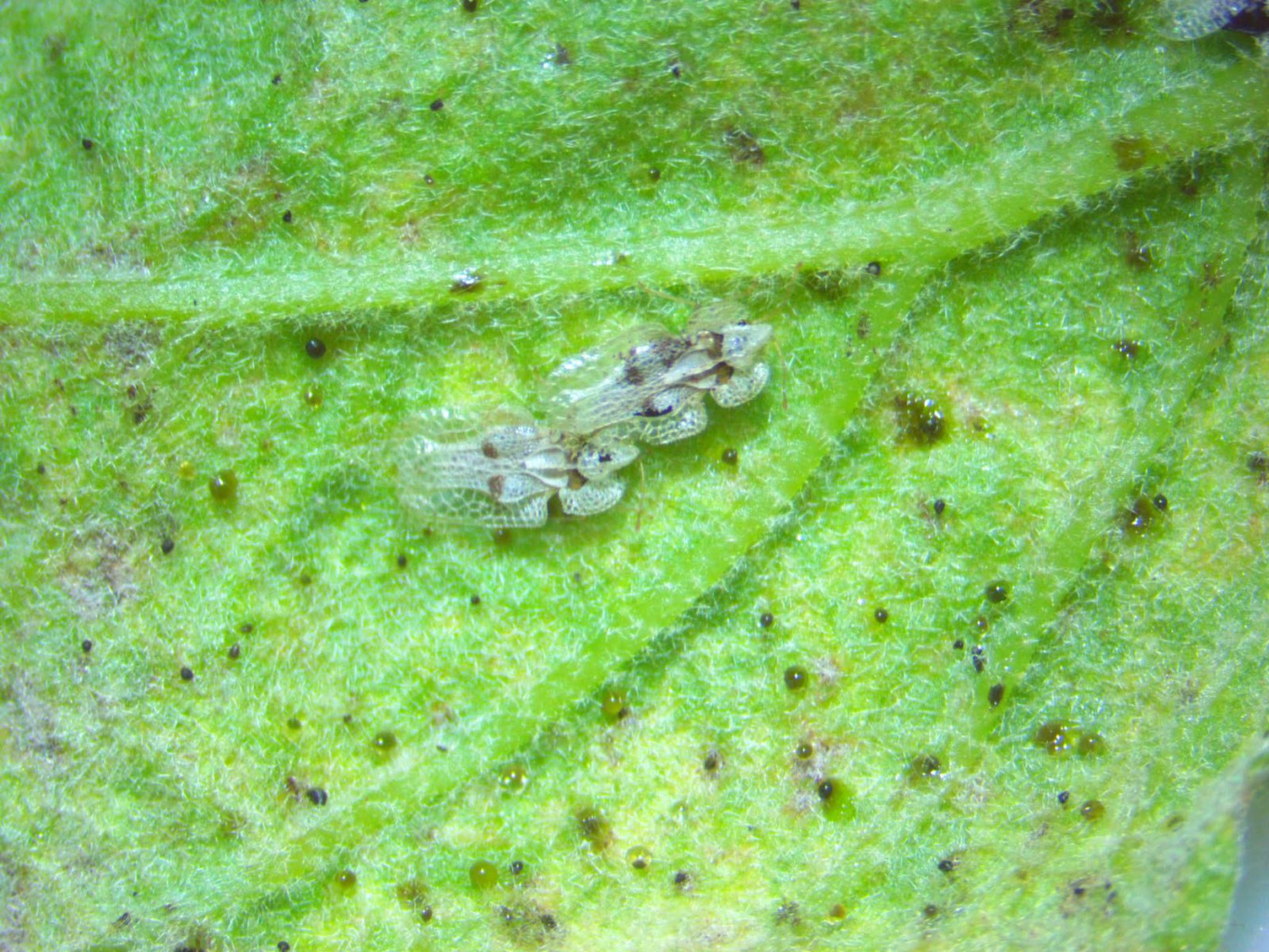
Lace bugs (Tingitidae) are a real threat to the oak forests of the Krasnodar Territory, they are found throughout the region, including the specially protected natural areas of the Sochi National Park and the Caucasian Reserve. For the first time, scientists recorded the problem in 2017 and lace bugs appeared in Sochi a year later. It is still difficult to find out where the lace bugs, originating from North America, were introduced to the Kuban area from. It is assumed that, unlike the box-tree moth (Cydalima perspectalis) and chestnut gall wasps (Dryocosmus kuriphilus) they were introduced with planting material, the insects were introduced to the Krasnodar Territory with imported fruits or other goods. At first, the damage was small, from 3 to 12 percent of the oak trees, but in 2022, the experts recorded an outbreak of damage by lace bugs and noted their successful adaptation to the Kuban climate. The Ministry of Natural Resources of the Krasnodar Territory does not exclude the risk of damaging the oak forests throughout the region as early as 2023. Sergey Tyurin, Head of the Forestry Department of the Ministry of Natural Resources of the Krasnodar Territory, told EcoTourism Expert about the threats due to active reproduction of lace bugs in the region and the ways to get rid of these insects to preserve oak forests.
- How acute is the problem related to lace bugs in the Krasnodar Territory today?
Currently, the areas affected by oak lace bugs are in the forest fund lands of all 15 forestries of the Krasnodar Territory with a total area of 845,313.8 hectares. These insects have become dominant in the entire region. The oak forest inspection showed that this invader is almost in all oak forests in the Kuban, except for some floodplain planted ones.
- What threats appear due to active mass reproduction of lace bugs?
Since the area of spreading the lace bugs increases every year, the Center for Forest Protection of the Krasnodar Territory expects that the pests can invade all the oak forests in the Krasnodar Territory in 2023.

- Are there any methods to control lace bugs?
In 2022, the Ministry of Agriculture of the Russian Federation published the “State Catalog of Pesticides and Agrochemicals Permitted for Use on the Territory of the Russian Federation” that specifies the possible use of spraying (with Lepidocide, Espero, Bitoxibacillin, Lokustin) against oak lace bugs during the growing season (ground application or ground aerosol ultra-low volume spraying).
- Has this method of lace bug control already been applied in the region?
Experimental application of pesticides in the focus of mass reproduction of oak lace bugs was carried out in the Kurdzhipsky Section of the Maikop Forestry, the Republic of Adygeya. The conclusions show that on days 2 to 5, a feeding larvae mortality rate of 80 to 97 percent was achieved, which didn’t prevent damaging the oak trees because of a rapid recovery in the number of larvae due to new ones appearing from a large number of larva eggs laid before the treatment with pesticides.
- What methods do you think are necessary for the total destruction of the lace bugs?
The growth of three generations of lace bugs during the summer season requires total treatments with chemicals or bacterial preparations every 15 days from May through September. It is necessary to use pesticides in all forest stands, thickets of small trees and shrubs where oak lace bugs can be, including the areas where the use of pesticides is restricted or prohibited by law, for example, in water protection zones, as well as in specially protected natural areas and other categories of land.
- If it is not possible to use pesticides to get rid of lace bugs in all the areas, what lace bug control methods can be used?
A forest protection strategy against the oak lace bug cannot be based on the use of pesticides, since it is impossible to treat all its habitats. Total multiple treatments during the year require significant financial expenses, material resources and manpower. Taking all this into account, it is necessary to consider the possibility of introducing effective and safe entomophages of this invader taken from its natural habitats in North America to protect the Kuban’s oak trees against lace bugs.
Methods for total destructing the lace bugs were proposed by the scientists of the Lazarevskaya Experimental Station for Plant Protection, a branch of the Federal Scientific Center for Biological Plant Protection in Sochi. The experts use pesticides but do not expect quick destruction of the quarantine pests for several reasons. Evgenia Kashutina, Director of the Lazarevskaya Experimental Station, told EcoTourism EXPERT about this.

- Have there been similar large-scale cases of damaging the oak trees and what is the special hazard caused by oak lace bugs?
The damage caused by oak lace bugs has a cumulative effect. The rapidly growing lace bug population weakens the host plants year after year, making them more vulnerable to various diseases. So, after last year’s rise in the number of lace bugs and greater damage they caused, the oaks in the Sochi’s Lazarevsky District were badly affected by leaf burn this year. Moreover, the crowns of most oak trees (70 to 90 percent) were damaged. We have never seen such high rate of oak tree mortality.
- Taking into account the fact that most of the oaks in the Krasnodar Territory have been already damaged, is it possible to get rid of the lace bugs in the region quickly?
It is very difficult to quickly get rid of lace bugs. First of all, this is explained by two factors, including a huge size of the host-plants, and the fragmentation of the areas where they grow.
- What solution do the Kuban scientists offer today to control lace bugs?
We believe that the most rational method of controlling the lace bugs in the Krasnodar Territory is to take measures to destruct the wintering population of the pests, as well as to destruct the lace bugs in the short period when they emerge from the winter diapause before they move to the trees’ branches. To do this, it is recommended to take, first of all, agrotechnical measures, including the collection and destruction of leaf litter in the winter, as well as the treatment of tree trunks with biological preparations and chemicals permitted for use.
